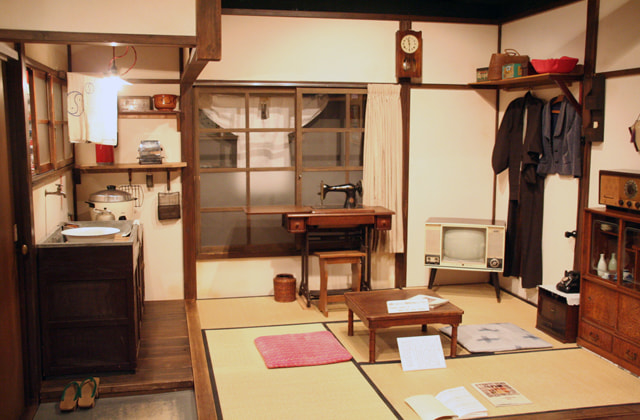
Nostalgic Bandai - it seems as if a housewife holding a metal basin pushes past a shop curtain and come in. (Picture: Haruna Totsuka)
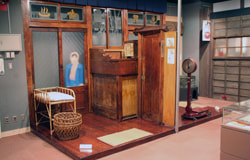
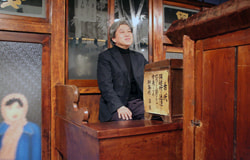
"Bandai," or a custodian's elevated seat in a bathhouse, installed in the museum, was actually used in bathhouse "Kingyo-yu," which was located in Kuramae, Taito City. Visitors can sit on the seat and have a custodian's feeling for a while.
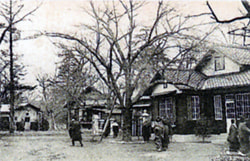
Peace Commemorative Tokyo Exposition (held from March 10 to July 31, 1922)
Bunka-jutaku, or a Japanese house incorporating Western elements, which was exhibited at "Bunka Mura," or a cultural theme park, in the Peace Commemorative Tokyo Exposition (1922), held in Ueno Park, served as a model for ideal, modern houses at that time. In Taito City, Dojun-kai apartment house "Uenoshita Apart" (Higashi Ueno, 1929), which was one of the Bunka-jutaku, still remains.
The three status symbols changed a lifestyle.
NHK and Nippon Television began broadcasting services in February and August 1953 respectively, and the time of TV started. Subsequently, so-called "three status symbols" of home appliances, which were a washing machine, refrigerator and vacuum cleaner, were valued, and electric rice cookers appeared, significantly changing traditional household chores and lifestyle. This change was triggered by the live broadcast of the Royal wedding parade in 1959 and the Tokyo Olympic Games in 1964.

A modern lifestyle at that time is reflected in the big sink, electric rice cooker, toaster and Thermos jug.
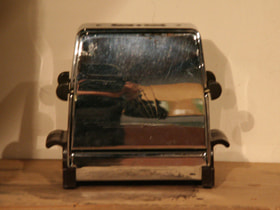
Toaster
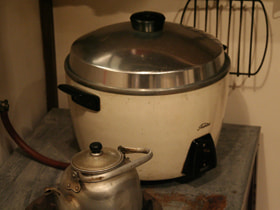
Electric rice cooker


"Bandai," or a custodian's elevated seat in a bathhouse, installed in the museum, was actually used in bathhouse "Kingyo-yu," which was located in Kuramae, Taito City. Visitors can sit on the seat and have a custodian's feeling for a while.

Peace Commemorative Tokyo Exposition (held from March 10 to July 31, 1922)
Bunka-jutaku, or a Japanese house incorporating Western elements, which was exhibited at "Bunka Mura," or a cultural theme park, in the Peace Commemorative Tokyo Exposition (1922), held in Ueno Park, served as a model for ideal, modern houses at that time. In Taito City, Dojun-kai apartment house "Uenoshita Apart" (Higashi Ueno, 1929), which was one of the Bunka-jutaku, still remains.

















